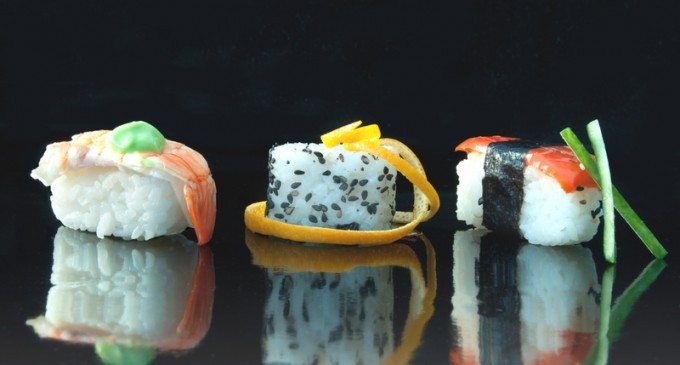
Imagine impressing your friends with handmade sushi from the comfort of your home! Or even just having the ability to dine on the delicacy as a product of your own hands.
To do it right, follow these tips below!
1. Know your history
Where did sushi even come from? It is a fairly new dish, derived from Japan. In the past, raw fish might have been salted or had vinegar added to it in order to preserve it, until the mid 1900s when advances in sanitation and technology allowed for a more raw diet.
After soy sauce became available around the middle of the 16th century, some people would cut up raw fish, dip pieces in the sauce and eat it, but this practice spread to the common folk only around the middle of the 19th century. And actually, eating raw fish only became widespread after World War II, thanks to advances in electrical refrigeration, trucking, and urban sanitation, including garbage removal.The Japanese had always eaten seafood, however, and had developed a wide repertoire of culinary techniques, and this knowledge was adapted to preparing raw fish.
We have a saying, kasshu hoju (cutting is the most important, cooking comes second). We could interpret this to mean that sashimi is superior to cooked food. Because cutting is so important, we have a wide variety of knives to choose from. They are our most important tools, and I sharpen mine until I could shave with them. One of my daily routines is sharpening knives.
Certain types of fish, such as tuna, are generally easier and less risky to prepare and consume raw. Larger fish are generally best.You want to limit your intake of seafood such as blue marlin, mackerel, sea bass, swordfish, tuna and yellowtail, due to their high mercury levels.Shrimp, scallops, and eel are also very good choices, and even octopus. If it all possible, try to get sushi-grade fish, which have been pre-treated to limit their risk of food borne illness.
Tuna blood is rich in iron and its amino acids break down slowly during the fermentation process, so tuna is ideal for eating raw. Small fish, especially those with shiny bluish backs, like sardines, tend to bruise easily, and even the Japanese will not eat them raw unless they are super fresh.
Here are some examples of seafood eaten raw: tuna, sea bream, prawn, squid, sea bass, young yellowtail, and flatfish (flounder). Fish with shiny, bluish backs may cause an unpleasant or allergic reaction, so if you want to serve them, place them in salt first for a while to inhibit bacterial action.
4. Know your safety
When cutting and cleaning the fish, keep your knives, the knife handles, the cutting board and your hands as clean as possible.
Your hands touch the raw fish at every step until the sushi reaches the table, so cleanliness is absolutely essential, even more than for sashimi. This is true not only for your hands but for the entire kitchen as well. Cleanliness is the law for the sushi chef.


There are no comments at the moment, do you want to add one?
Write a comment